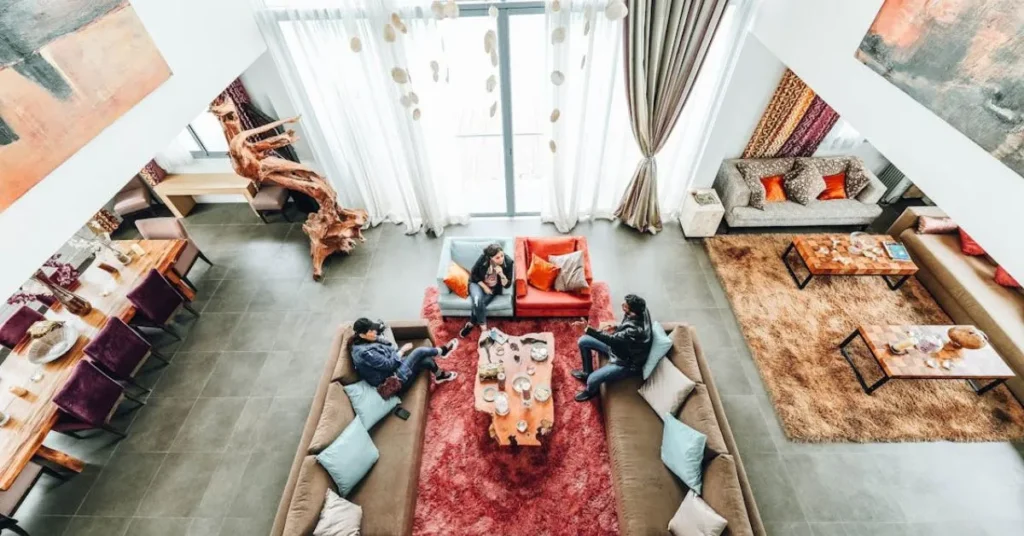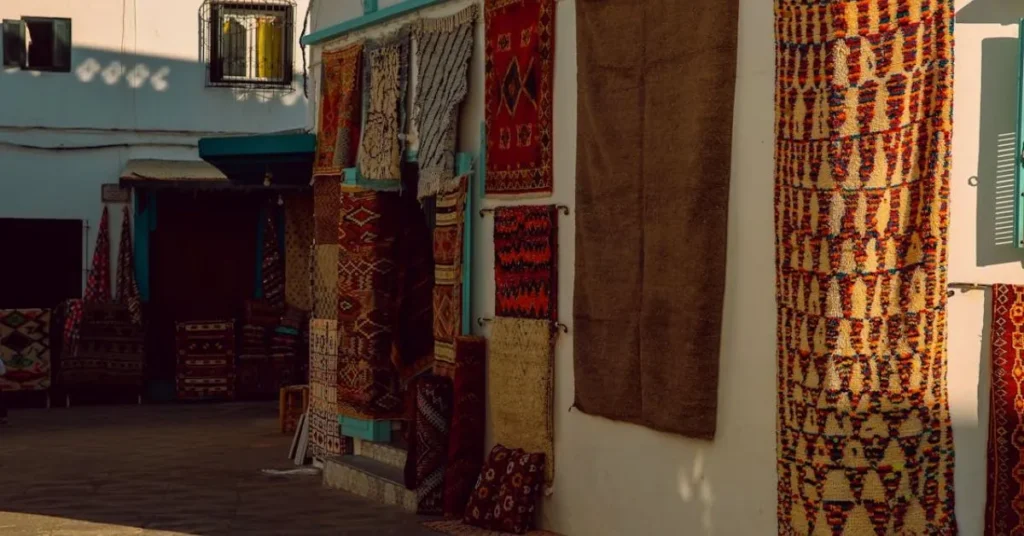The right rug can make or break the room. This is not hyperbole or an exaggeration, but pretty much a statement of fact. Not only from a practical standpoint, where they are soft under your feet and add heat and warmth to your flooring but from a design standpoint as well. The right rug anchors the room effortlessly and creates layers of depth, interest, and intrigue, as silly as that may sound at first. And yet, even though they can connect diverse interior elements, creating a harmonious, complete space, for most people, the rug is merely an afterthought, something to be picked up from the store at random with little thought or consideration put into it. This article aims to change that callousness, and even though choosing the right rug can be almost intimidating with an almost endless scope of options, with a little information and care, it can be easier than you thought.
The Right Size
The first step in finding that perfect rug is figuring out the best size for your room, and size absolutely matters. The right-sized rug will anchor the room, bringing balance and warmth to the space. But paradoxically, one that is too small will make the room feel disjointed and almost uninviting. A bigger room will also require bigger rugs, like large 9×12 area rugs, and oversize is your “better safe than sorry” way here. In your average-sized room, a large rug will bring balance to the space, and even in a smaller room, a larger rug may create an illusion of size. When you are measuring the room for a rug, keep furniture placement in mind, as a large rug needs to ideally accommodate all your furniture while still leaving 40 cm of bare floor between the rug and the walls.
Styling Room Around Rug
As the rug anchors the room and sets the overall atmosphere and tone of the space, it should never be a mere afterthought, which means you need to know how to style the room around the rug. If your room already has furniture in it, it will make finding the right rug more difficult, of course, as you are now limited. So, if at all possible, use the rug as a foundation, around which you then plan your furniture. For many people, when they look into a room, the first thing their eyes register is the floor, consciously or not, and that first glimpse will often dictate their immediate reaction. Interior designers are aware of this fact, which is why they also often use the rug as the starting point, before creating the room, quite literally, from the ground up.
Rug Type
When considering the type of rug you want, there are two factors you should keep in mind: first is aesthetics, or the look or style you are going for with the rug, and second is function. While your rug might suit the space visually, its weave also needs to be suitable for the room and how often it’s used. There are many different rug weaves, so let’s go over a few of them. First up, we have natural fibers that are easy to clean and long-lasting. This type of rug is suitable for areas that see a normal amount of traffic. Synthetic fibers, such as acrylic, nylon, and polyester, among others, are often used in textiles, and these rugs are also easy to clean, durable, and generally stain-resistant, making them a great choice if you have small children and spills are a common occurrence. Next up, we have artificial silk rugs, or art silk, made from luxurious and soft fibers that can elevate a room; however, they do have specific care requirements and are generally more suited to areas with low traffic, as they are more about aesthetics than function.

Maintenance
Rugs are underfoot, see a lot of use and foot traffic, and with dirty footprints, accidental spills, crumbs, and everything in between, keeping them pristine and spotless is practically impossible. It is recommended to properly vacuum the rug at least once a week to avoid the build-up of dirt and dust, which can cause allergic reactions if too much of it builds up. If you can, use a vacuum with a low suction setting and a non-rotating head. If a spill happens, you need to be quick, as time is essential here.
Spot clean wool blend rugs with a damp cloth of some sort, but do not use the damp cloth on something like an art silk rug; instead, you should use a paper towel to absorb the liquid as fast as possible, as any more liquid may cause even more damage. It is also a good idea to move your rug away from constant direct sunlight if you can, to prevent discoloration. To avoid indentations from furniture like chairs or tables, place felt discs under said furniture’s legs. It is also recommended to rotate your rug every six months so it fades and wears evenly, and if you want to avoid excessive wear, shedding, and dirt, try not to walk over the rug with shoes or slippers on.
Color
The final step is in your hands and eyes alone, picking the right color, pattern, and style. This is where you step in and choose what suits you best, what colors and tones fit the room you want to put the rug in, and what atmosphere and vibe you want to create. Maybe you want to go for more neutral colors that do not stand out, like grey, sage, or olive green, or perhaps you prefer warmer shades like terracotta or brick. It’s important to remember that neutral does not mean dull; rather, you get a base palette on which you can build by layering other colors, materials, and textures.
When choosing your rug, it is important to put thought and consideration into it. Think about the room, its size, and what tone you want to go for. Consider which material would be best suited for the space. It is all entirely in your hands and eyes.

